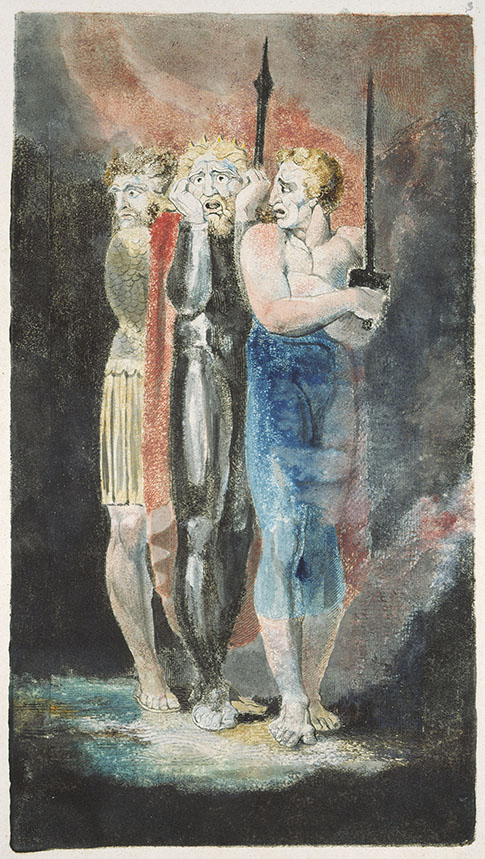The William Blake Archive is pleased to announce the publication of nineteen separate prints designed and etched or engraved by Blake. The original works are housed in seven collections, including the Bodleian Library, British Museum, Robert N. Essick collection, Fitzwilliam Museum, Huntington Library, Art Collections, and Botanical Gardens, Museum of Fine Arts, Boston, and National Gallery of Art, Washington. These separate prints join two others, Deaths Door and George Cumberland’s Card, and four series of prints, all previously published, to complete this important category of Blake’s endeavors as a printmaker.
The new group of nineteen includes Blake’s first separate engraving, Joseph of Arimathea Among the Rocks of Albion, executed while still an apprentice, and two of his masterpieces in mixed-method etching/engraving, the large Job and Ezekiel plates. The Accusers of Theft Adultery Murder, Lucifer and the Pope in Hell, and Albion rose depict Blake’s response to the political revolutions of the late eighteenth century. Blake printed these three, plus A Dream of Thiralatha and Joseph of Arimathea Preaching to the Inhabitants of Britain, in colors as part of his development of relief and planographic color printing in the mid-1790s. Other plates, ranging from The Approach of Doom to the Enoch lithograph and The Chaining of Orc, testify to Blake’s lifelong experimentation with innovative graphic techniques. He produced Deaths Door and the Virgil Relief Etching as book illustrations but they were never published as such and exist only as unique, separate impressions. Introductions to each work offer information on medium, changes in state, dating, and subject. Blake’s Laocoön etching/engraving, sometimes considered a separate plate, is included among the Illuminated Books in the Archive.
Late in his career, c. 1820-25 or even extending into his final year, Blake returned to several of his earlier separate engravings, dramatically revising the interplay of darkness and light in their designs and adding new inscriptions on some plates that alter their meaning. These final states of Joseph of Arimathea among the Rocks of Albion, Job, Ezekiel, The Accusers, Albion rose, and Blake’s largest and most ambitious print, Chaucers Canterbury Pilgrims, are included, along with extant earlier states. The publication of these and other multiple states and printings offer insights into Blake’s development as a printmaker and changes in his thematic interests over several decades.
As always, the William Blake Archive is a free site, imposing no access restrictions and charging no subscription fees. The site is made possible by the University of North Carolina at Chapel Hill with the University of Rochester, the continuing support of the Library of Congress, and the cooperation of the international array of libraries and museums that have generously given us permission to reproduce works from their collections in the Archive.

